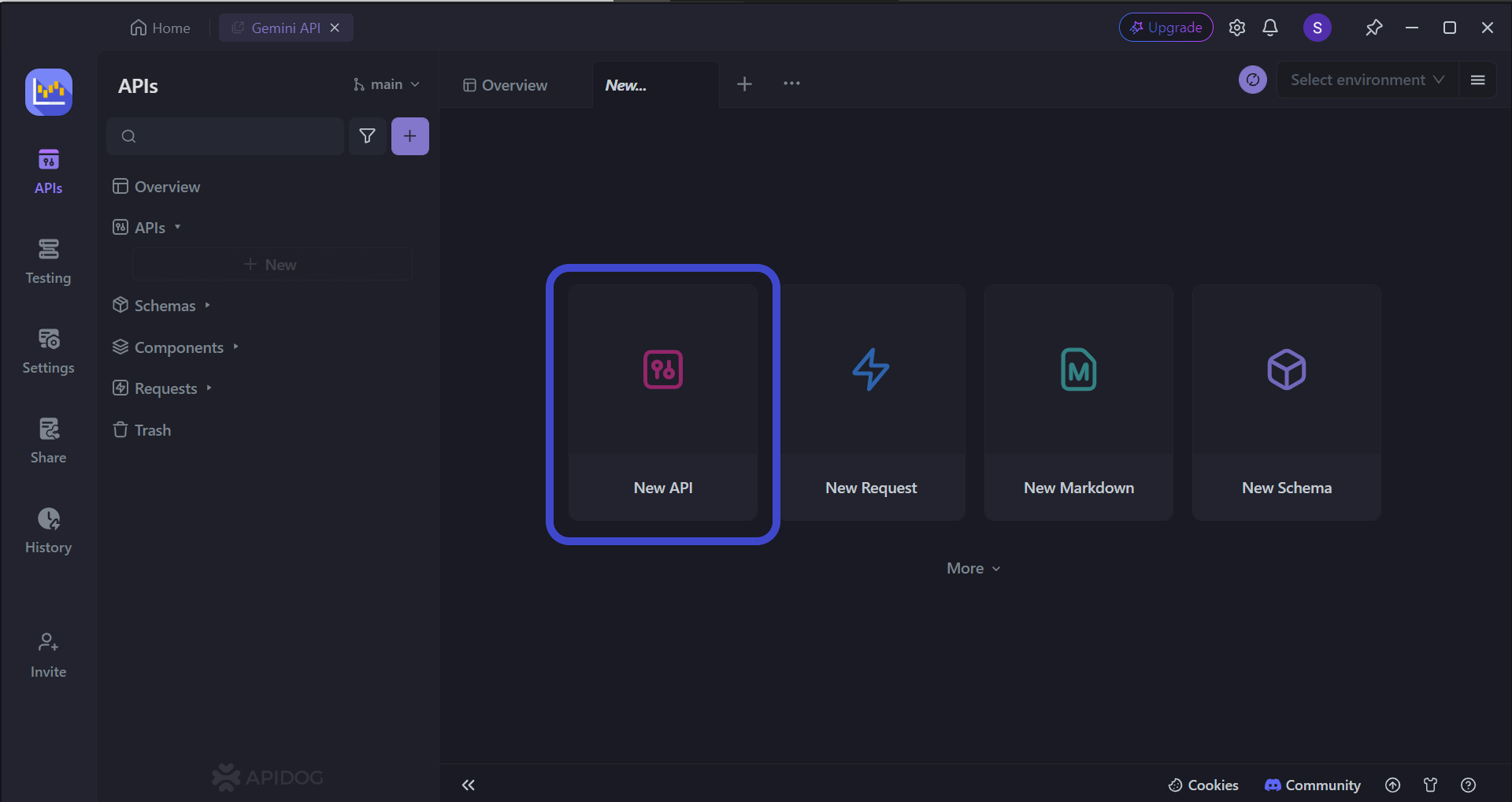In the modern business landscape, streamlining workflows and maximizing efficiency are paramount for success. One powerful tool that can achieve this is API (Application Programming Interface) integration. By enabling applications to seamlessly communicate and share data, APIs unlock a treasure trove of potential. This guide delves into the world of effective API integration, equipping you with the knowledge and strategies to optimize your processes, boost productivity, and propel your business forward.
A powerful API development platform that can resolve many development obstacles is Apidog. Apidog can provide the proper functionalities used to customize your APIs to your desires.
If you wish to learn more about Apidog, make sure to download the application by clicking the button below! 👇

What is API Integration?
API integration refers to the process of connecting different software systems or applications through their respective APIs (Application Programming Interfaces). These APIs act as messengers, allowing the applications to exchange data and perform actions on each other's behalf. Imagine it like building bridges between separate islands; API integration creates a smooth pathway for information to flow freely between different systems.
Key Features of API Integration
1. Connectivity
Imagine separate islands of information in your business, each representing a different software system. API integration acts as the bridge builder, creating a standardized communication channel. APIs define a set of rules and procedures that applications can use to "talk" to each other, enabling them to exchange data and functionality. This connectivity eliminates the need for custom point-to-point integrations, simplifying development and future maintenance.
2. Data Sharing
At the heart of API integration lies data exchange. APIs provide a secure and efficient way for applications to share information. They define the format and structure of the data being exchanged, ensuring compatibility and reducing the risk of errors that often plague manual data entry. This seamless data flow allows applications to access and utilize information from other systems, fostering a more data-driven approach to business processes.
3. Automation
One of the most significant benefits of API integration is its ability to automate tasks. APIs can trigger actions within other applications, eliminating the need for manual intervention. For example, a customer placing an order on an e-commerce platform might automatically trigger an order processing workflow in the inventory management system through an API integration. This automation streamlines workflows, boosts productivity and frees up human resources to focus on higher-value activities.
4. Scalability
As businesses grow and their software ecosystems become more complex, API integration provides a scalable solution. Well-designed APIs can easily accommodate new applications and increased data flow without requiring significant rewrites. This adaptability ensures that your integrations remain robust and efficient even as your business evolves.
5. Security
Secure data exchange is paramount. APIs offer robust authentication and authorization mechanisms to ensure that only authorized applications can access and manipulate data. These mechanisms typically involve verifying the identity of the application requesting access and ensuring they have the necessary permissions to perform specific actions. This layered approach safeguards sensitive information and maintains data integrity.
6. Standardization
APIs adhere to established protocols and formats, such as REST (Representational State Transfer) or SOAP (Simple Object Access Protocol). This standardization guarantees compatibility between different applications, regardless of the programming language they're built on. Just like using a common language allows people to communicate effectively, standardized API protocols enable applications to exchange information smoothly and efficiently.
7. Flexibility
APIs offer a modular approach to integration. Developers can choose specific functionalities from an API to integrate into their application. This allows for a more targeted and flexible development process. You only integrate the features you need, reducing development complexity and optimizing resource allocation.
8. Reusability
Once developed and tested, APIs can be reused across various applications within your organization. This not only saves development time and resources but also promotes code reuse and simplifies future integrations. By leveraging existing APIs, developers can focus on building unique functionalities instead of reinventing the wheel for every integration.
The more functionalities an API may possess, the more complex the API may become. To ensure that we retain a good understanding on our APIs, you should understand how to navigate through API versioning:

Real-world Examples of API Integration Implementation
1. Weather Apps
The weather information displayed on your phone doesn't come from a magical built-in weather station. Weather apps like AccuWeather or Weather Underground integrate with weather service APIs to access real-time data on temperature, precipitation, and more. This allows them to provide you with up-to-date forecasts for your location.
2. Travel Booking Platforms
Imagine searching for flights and hotels on a travel website and having results displayed seamlessly from various airlines and booking services. This is made possible by API integration. Travel platforms like Kayak or Skyscanner integrate with airline and hotel APIs to search for availability and pricing across different providers, offering you a consolidated view in one place.
3. Social Media Logins
Signing in to websites with your existing social media credentials (Facebook, Google) is a common convenience. This is achieved through API integration. Websites integrate with social media APIs to verify your identity and pre-populate your profile information, saving you time and effort during registration.
4. Fitness Trackers and Health Apps
Many fitness trackers and health apps allow you to share your workout data with other platforms. For instance, your Fitbit might integrate with a nutrition app like MyFitnessPal. This is achieved through API integration, allowing the apps to securely exchange your activity data and provide a more holistic view of your health and fitness.
5. Online Payment Processing
When you make a purchase online, the secure processing of your payment happens through API integration. E-commerce platforms integrate with payment gateway APIs like Stripe or PayPal to securely transmit your payment information to the financial institution for authorization and settlement. This ensures a smooth and secure checkout experience.
To understand more on how to integrate APIs, you can resort to this article, which explains how you can utilize Axios to simplify API integration on your existing APIs!

Significance of API Integration
In today's digital landscape, where data reigns supreme and applications are aplenty, API integration has become an indispensable tool for businesses of all sizes. It's the invisible bridge that connects disparate systems, fostering collaboration, streamlining processes, and ultimately driving success. But why exactly is API integration so important? Let's delve deeper into its crucial role:
1. Enhanced Efficiency and Productivity
Manual data entry between different software programs is a recipe for errors and wasted time. API integration eliminates this pain point. By enabling seamless data exchange, APIs automate workflows and trigger actions across applications.
Imagine an order placed on an e-commerce platform automatically triggering an update in the inventory management system or a customer service interaction seamlessly populating a CRM system. This automation frees human resources for higher-value tasks and boosts overall productivity.
2. Improved Customer Experience
Customers today expect a smooth and personalized experience. API integration empowers businesses to deliver just that. For instance, integrating a loyalty program API with a customer service platform allows customer service representatives to view a customer's past purchases and preferences in real time.
This personalized approach fosters customer satisfaction and loyalty. Additionally, APIs allow businesses to integrate features from other providers, like real-time shipping updates or weather data into their applications, enriching the customer experience.
3. Innovation and Competitive Advantage
APIs act as building blocks for innovation. By integrating with external services and functionalities, businesses can unlock new capabilities and create unique value propositions.
Imagine a ride-hailing app integrating with a mapping API to offer real-time traffic updates or with a weather API to suggest alternative routes during bad weather. This ability to leverage external functionalities sets businesses apart and fuels innovation.
4. Streamlined Data Management
Data silos, where information is trapped within individual systems, are a hindrance to data-driven decision-making. API integration breaks down these silos by enabling data to flow freely between applications.
This consolidated view of data empowers businesses to gain deeper insights into customer behavior, operational efficiency, and market trends. With this knowledge, businesses can make informed decisions, optimize strategies, and drive growth.
5. Flexibility and Scalability
Businesses need to evolve, and API integration provides the flexibility to adapt. As new applications and services emerge, APIs allow for easy integration, keeping your software ecosystem dynamic and responsive to changing needs.
Additionally, well-designed APIs are inherently scalable. They can accommodate increased data flow and new integrations without requiring significant modifications, ensuring your systems can grow alongside your business.
6. Reduced Development Costs and Time-to-Market
Developing everything from scratch can be time-consuming and expensive. API integration offers a cost-effective alternative. Businesses can leverage pre-built functionalities exposed through APIs instead of reinventing the wheel. This not only reduces development costs but also accelerates time-to-market for new applications and features.
7. Fostering Collaboration
API integration isn't just about internal systems; it opens doors to collaboration. Businesses can integrate with partners, suppliers, or even competitors through APIs to establish a more connected ecosystem. This streamlines communication, facilitates joint projects and unlocks new opportunities for mutual growth.
Apidog - Seamlessly Integrate APIs with The Best API Platform
A lot of processes and fine details are involved when developing APIs, making API tools with a simple and clear display even more important. To ensure that you can view your APIs with clarity, you should consider using an API development tool like Apidog!


Creating New APIs with Apidog
With Apidog, you can create APIs by yourself. By developing your own APIs, you can ensure that they will provide the specific functionalities that consumers, or perhaps yourself, wish to have for their application.

Begin by pressing the New API button, as shown in the image above.

Next, you can select many of the API's characteristics. On this page, you can:
- Set the HTTP method (GET, POST, PUT, or DELETE)
- Set the API URL (or API endpoint) for client-server interaction
- Include one/multiple parameters to be passed in the API URL
- Provide a description of what functionality the API aims to provide.
To provide some assistance in creating APIs in case this is your first time creating one, you may consider reading these articles to understand the best practices for making REST APIs (or APIs in general):


Viewing an API Response Using Apidog
Apidog has a beautiful yet intuitive user interface. Designed with a design-first approach, Apidog encourages users to visualize the details and functionalities of the API they wish to create. Once you are done designing your API(s), you can test out APIs on the go, viewing the different API response codes that you may encounter when communicating with the API.


From the image above, you can easily view the response that the API sent back to you, the client. With a clear image of what the API returns to your application, you can then confidently design your code without having to second-guess yourself, saving precious time and effort.
Conclusion
In conclusion, API integration has become the cornerstone of modern software development. By enabling applications to communicate and share data seamlessly, APIs unlock a world of possibilities. Businesses can leverage external services to enhance their offerings, streamline workflows, and deliver a richer user experience. As technology continues to evolve, so too will the capabilities of APIs. We can expect even more sophisticated integrations in the future, fostering a more interconnected and data-driven digital landscape.
However, successful API integration requires careful planning and execution. Security considerations, robust error handling, and ongoing maintenance are crucial for ensuring smooth operation. By investing in a well-defined API strategy, businesses can unlock the full potential of this powerful technology and reap the benefits of a truly connected ecosystem.
To ensure that APIs can seamlessly integrate into one of your programs or applications, you should consider using a reliable yet capable tool like Apidog. With various functionalities to support APi developers for the entire API lifecycle, you no longer have to worry about finding another API development tool!





